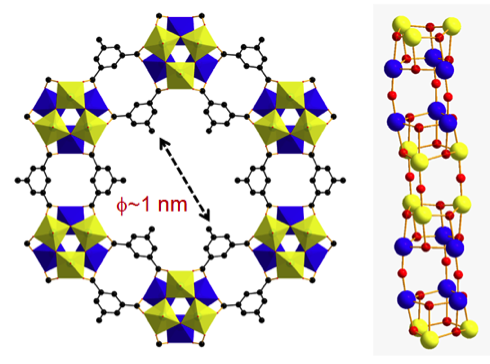
Porous titanium oxide materials are attractive for energy-related applications. However, many suffer from poor stability and crystallinity. Here we present a robust nanoporous metal–organic framework (MOF), comprising a Ti12O15 oxocluster and a tetracarboxylate ligand, achieved through a scalable synthesis. This material undergoes an unusual irreversible thermally induced phase transformation that generates a highly crystalline porous product with an infinite inorganic moiety of a very high condensation degree. Preliminary photophysical experiments indicate that the product after phase transformation exhibits photoconductive behavior, highlighting the impact of inorganic unit dimensionality on the alteration of physical properties. Introduction of a conductive polymer into its pores leads to a significant increase of the charge separation lifetime under irradiation. Additionally, the inorganic unit of this Ti-MOF can be easily modified via doping with other metal elements. The combined advantages of this compound make it a promising functional scaffold for practical applications.

Pour plus d’informations, consultez le commniqué de presse associé à cet article :
À la recherche d’un oxyde de titane poreux !
References:
A phase transformable ultrastable titanium-carboxylate framework for photoconduction
Sujing Wang, Takashi Kitao, Nathalie Guillou, Mohammad Wahiduzzaman, Charlotte Martineau-Corcos, Farid Nouar, Antoine Tissot, Laurent Binet, Naseem Ramsahye, Sabine Devautour-Vinot, Susumu Kitagawa, Shu Seki, Yusuke Tsutsui, Valérie Briois, Nathalie Steunou, Guillaume Maurin, Takashi Uemura and Christian Serre
Nature Communications, 9, 1660 (2018)
DOI: 10.1038/s41467-018-04034-w
A phase transformable ultrastable titanium-carboxylate framework for photoconduction
